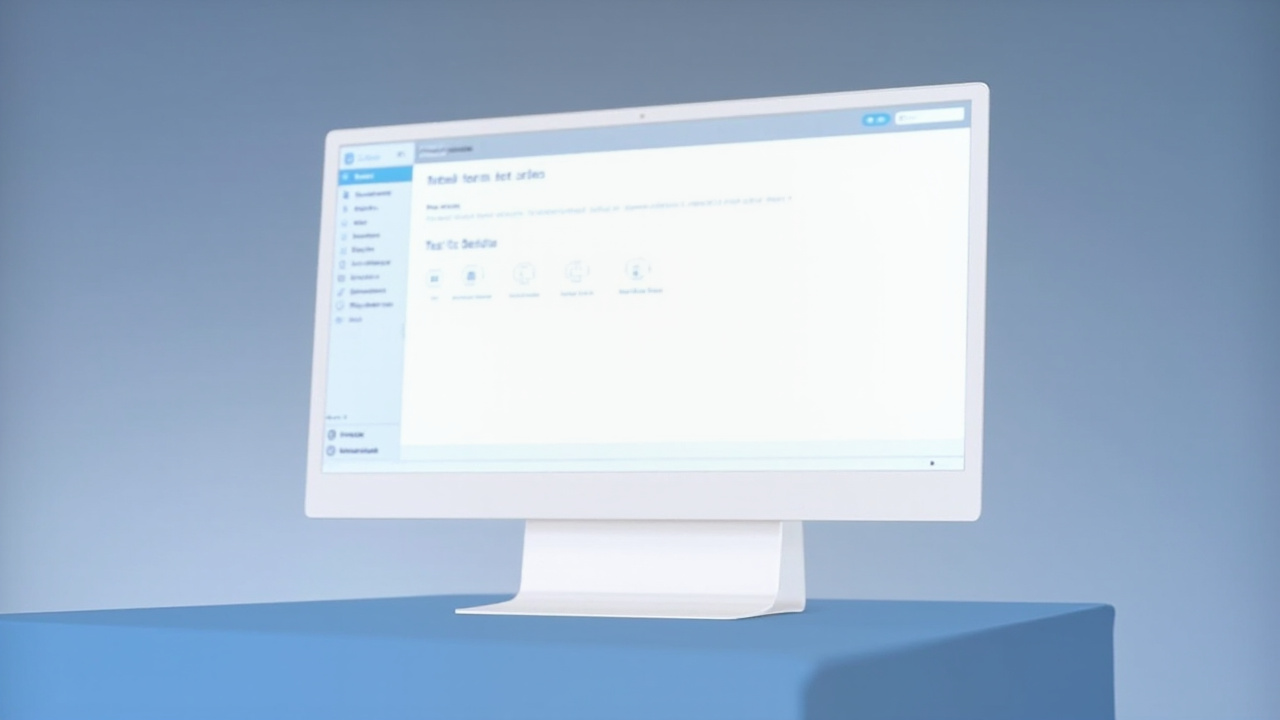Unit testing has become an integral part of modern software development, providing a safety net that catches bugs early and ensures code quality. Enter Genqe, a tool that’s making waves for its innovative approach to unit testing. In this post, we’ll delve into how Genqe is revolutionizing the landscape of unit testing, highlighting its features, benefits, and practical applications. Whether you’re a seasoned developer or new to the world of coding, this guide will equip you with the knowledge to harness Genqe effectively.
The Evolution of Unit Testing: Setting the Stage

Unit testing has undergone a significant transformation over the past few decades. Traditionally, unit tests were often seen as a cumbersome, time-consuming task that developers grudgingly performed. However, as the complexity of software applications has grown, so too has the need for rigorous testing methodologies. This section explores how unit testing has evolved, paving the way for tools like Genqe.
The Traditional Approach
In the early days of software development, unit tests were manually written and executed. This labor-intensive process often led to incomplete test coverage and overlooked bugs. Developers focused on writing code rather than testing it, resulting in a quality assurance bottleneck.
The Rise of Automated Testing
The introduction of automated testing frameworks marked a turning point. Tools like JUnit and NUnit started to gain traction, allowing developers to automate repetitive testing tasks. Automated testing not only increased efficiency but also improved test accuracy and reliability.
Enter Genqe: A New Era
Genqe represents the next evolution in unit testing by integrating AI-driven insights and predictive analytics. By leveraging machine learning algorithms, Genqe automates the creation and execution of unit tests, ensuring comprehensive coverage with minimal human intervention.
“Genqe is not just a tool; it’s a game-changer in how we approach unit testing.”
As we move forward, we’ll explore the unique features of Genqe and how it addresses the pain points of traditional unit testing methods.
Understanding Genqe: Features and Functionality

To truly appreciate Genqe’s impact, it’s crucial to understand its core features and functionalities. This section provides an in-depth look at what makes Genqe stand out in the crowded landscape of testing tools.
AI-Assisted Test Creation
One of Genqe’s standout features is its ability to generate unit tests using artificial intelligence. By analyzing the source code, Genqe identifies critical paths and edge cases, creating comprehensive test suites that cover a wide range of scenarios.
- Predictive Analytics: Genqe uses predictive analytics to determine potential failure points within the code, prioritizing tests that address these vulnerabilities. Dynamic Test Adjustment: As the codebase evolves, Genqe dynamically adjusts the test suite to reflect changes, ensuring ongoing relevance and accuracy.
Seamless Integration
Genqe integrates seamlessly with popular CI/CD pipelines, making it an attractive option for teams looking to streamline their testing processes. Whether you’re using Jenkins, Travis CI, or GitLab CI, Genqe fits into your workflow without disrupting existing practices.
- Cross-Platform Compatibility: Genqe supports a variety of programming languages and platforms, making it a versatile choice for diverse development environments. API Support: The tool offers robust API support, enabling developers to customize and extend its functionalities according to their unique needs.
“With Genqe, we’re not just testing code; we’re future-proofing our applications.”
User-Friendly Interface
Despite its advanced capabilities, Genqe boasts a user-friendly interface that simplifies test management. Developers can easily navigate through test results, view detailed reports, and make data-driven decisions to improve code quality.
As we continue, we’ll explore how Genqe’s features translate into tangible benefits for development teams.
The Benefits of Using Genqe for Unit Testing

Harnessing Genqe for unit testing comes with a myriad of benefits that extend beyond just improved code quality. In this section, we’ll explore how Genqe enhances productivity, reduces costs, and mitigates risks in software development.
Enhanced Code Quality
Genqe’s ability to automatically generate and execute tests means that developers can achieve higher test coverage without investing significant manual effort. This translates to enhanced code quality and reliability.
- Comprehensive Test Coverage: Genqe’s AI-driven approach ensures that even the most intricate code paths are tested, minimizing the risk of undetected bugs. Early Bug Detection: By catching issues early in the development cycle, Genqe helps reduce the cost and complexity of bug fixes.
Increased Developer Productivity
With Genqe handling the bulk of test creation and execution, developers can focus on what they do best: writing code. This shift in focus leads to increased productivity and faster development cycles.
- Reduced Manual Effort: Genqe automates repetitive testing tasks, freeing developers to concentrate on feature development and innovation. Time Savings: By streamlining the testing process, Genqe accelerates time-to-market for new features and updates.
“Genqe empowers developers to do more with less, driving innovation and efficiency.”
Cost Savings and Risk Mitigation
Implementing Genqe can lead to significant cost savings for organizations. By reducing the need for extensive manual testing and minimizing the risk of costly post-release fixes, Genqe proves to be a wise investment.
- Lower Maintenance Costs: With automated testing in place, maintenance efforts and associated costs are drastically reduced. Risk Reduction: The comprehensive nature of Genqe’s testing approach mitigates the risk of critical failures in production environments.
As we proceed, we’ll delve into real-world applications and case studies that highlight Genqe’s impact in action.
Real-World Applications: Genqe in Action

To truly understand the power of Genqe, let’s explore some real-world applications and case studies that demonstrate its effectiveness in various industries.
Case Study: E-Commerce Platform
An e-commerce company faced challenges with frequent bugs and downtime affecting customer satisfaction. By integrating Genqe into their development pipeline, they achieved remarkable results.
- Improved Test Coverage: Genqe’s AI-driven tests covered edge cases previously missed, leading to a 30% reduction in post-release issues. Faster Release Cycles: With automated testing in place, the company reduced their release cycle from bi-weekly to weekly, increasing their agility in responding to market needs.
Case Study: Financial Services
In the highly regulated financial sector, ensuring software reliability is paramount. A financial services firm turned to Genqe to enhance their testing processes.
- Regulatory Compliance: Genqe’s comprehensive test coverage helped the firm meet stringent regulatory requirements, avoiding costly compliance breaches. Risk Mitigation: By identifying potential vulnerabilities early, the firm mitigated the risk of security breaches and financial loss.
“Genqe is not just a tool but a strategic partner in achieving software excellence.”
Case Study: Healthcare Technology
In healthcare, software failures can have serious implications. A healthcare technology company adopted Genqe to ensure their applications were robust and error-free.
- Patient Safety: Genqe’s thorough testing helped the company deliver safer, more reliable software, enhancing patient trust. Operational Efficiency: With Genqe automating routine tests, the development team could focus on innovation, improving overall operational efficiency.
These case studies illustrate Genqe’s versatility and impact across different sectors. Next, we’ll delve into practical tips for implementing Genqe effectively.
Implementing Genqe: Practical Tips and Best Practices

For those looking to integrate Genqe into their development processes, this section offers practical tips and best practices to ensure a smooth transition and maximize the tool’s potential.
Step 1: Assess Your Current Testing Processes
Before implementing Genqe, it’s essential to assess your existing testing processes to identify areas that can benefit from automation and AI-driven insights.
- Identify Bottlenecks: Determine where manual testing is causing delays and assess test coverage gaps. Set Clear Objectives: Define what you hope to achieve with Genqe, such as improved test coverage, reduced defects, or faster release cycles.
Step 2: Plan Your Integration Strategy
Integrating Genqe requires careful planning to align with your development workflow and infrastructure.
- Choose the Right Projects: Start with projects that will benefit most from enhanced testing, such as critical applications or those with frequent updates. Pilot and Iterate: Begin with a pilot project to understand Genqe’s capabilities and make iterative improvements based on initial results.
Step 3: Train Your Team
Successful implementation depends on your team’s ability to leverage Genqe effectively.
- Provide Training and Resources: Equip your team with the knowledge and skills needed to use Genqe confidently. Foster a Culture of Testing: Encourage a mindset that values testing as an integral part of the development process.
“Implementing Genqe is an investment in your team’s efficiency and your software’s quality.”
Step 4: Monitor and Optimize
Once Genqe is integrated, continuous monitoring and optimization are key to realizing its full benefits.
- Track Key Metrics: Measure metrics like test coverage, defect rates, and release cycle time to gauge Genqe’s impact. Adapt and Evolve: As your development needs change, continue to refine your use of Genqe to maintain alignment with business goals.
By following these best practices, you can ensure a successful Genqe implementation that delivers tangible results. In the next section, we’ll address common challenges and how to overcome them.
Overcoming Challenges: Navigating Common Hurdles with Genqe

While Genqe offers powerful capabilities, implementing it may present challenges. This section discusses common hurdles and strategies to overcome them, ensuring a smooth adoption process.
Challenge 1: Resistance to Change
Change can be daunting, especially when it involves altering established processes. Resistance from team members can hinder Genqe’s successful implementation.
- Solution: Involve stakeholders early in the process and communicate the benefits of Genqe clearly. Highlight how it will make their work more efficient and rewarding.
Challenge 2: Integration Complexity
Integrating a new tool into an existing development pipeline can be complex, especially when dealing with legacy systems.
- Solution: Start small with a pilot project to identify potential integration issues. Work closely with Genqe’s support team to address challenges and leverage their expertise.
Challenge 3: Skill Gaps
Not all team members may be familiar with AI-driven testing tools, leading to a learning curve.
- Solution: Provide comprehensive training and ongoing support to help team members become proficient in using Genqe. Encourage peer learning and collaboration.
“Challenges are opportunities in disguise. With the right approach, you can turn potential hurdles into stepping stones.”
Challenge 4: Measuring ROI
Demonstrating the return on investment for Genqe can be challenging, especially in the early stages.
- Solution: Track relevant metrics, such as test coverage improvement and defect reduction, to quantify Genqe’s impact. Share success stories to build confidence in the tool’s effectiveness.
By proactively addressing these challenges, you can ensure a smoother transition and maximize the benefits of Genqe. Finally, let’s wrap up our discussion with key takeaways and a call to action.
Conclusion: Embracing the Future of Unit Testing with Genqe

As we conclude this comprehensive guide, it’s clear that Genqe is more than just a testing tool it’s a catalyst for transformation in software development. By automating and enhancing unit tests, Genqe empowers developers to deliver high-quality software faster and with greater confidence.
In today’s fast-paced digital landscape, staying ahead requires innovation and adaptability. Genqe offers a path forward, enabling teams to future-proof their applications and maintain a competitive edge. As you consider integrating Genqe into your workflow, remember the insights and strategies shared in this guide to ensure a successful implementation.
“Genqe is not the future of unit testing; it’s the present. Embrace it, and transform your development process.”
For those eager to explore Genqe further, now is the time to take action. Start small, learn continuously, and watch as your development practices evolve and thrive. The future of unit testing is here are you ready to embrace it?
Explore more about Genqe and discover how it can revolutionize your development process. Stay curious, stay innovative.
Explore More on This Topic
Interested in diving deeper into this subject? Connect with experts or explore additional resources to expand your understanding.
If the link above does not work, please visit: https://calendly.com/dm-csimplifyit/30min?month=2025-05